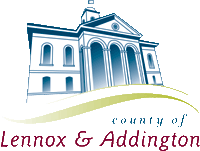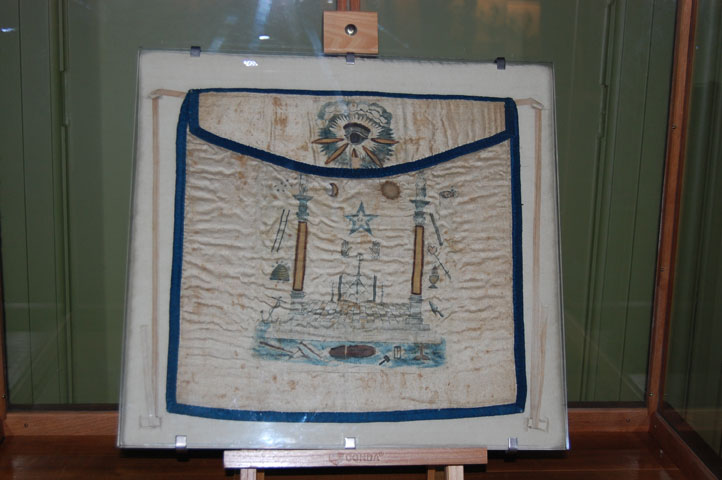
Loyalist Exiles (1784-1799)Jacob Huffman's Masonic Apron |
|||
|
|||
18th Century Masonic Apron |
This Mason's Apron was owned by Jacob Huffman UE who was born near Arlington, in the Camden Valley of New York around 1756. He was the son of Elias and Elizabeth Huffman. He signed up in Peters Corps (Queens Loyal Rangers) in 1776 at the age of twenty through a recruitment campaign led by Carscallen. He married Margaret Embury, a resident of Camden Valley (b.c.1768) sometime before leaving for Canada. After the American Revolution, he received a land grant in Fredericksburgh Township and lived there with his wife and raised ten children. DISCOVER MORE![]()
Freemasonry, as the Masonic Order was also known, was a world wide fraternity that emphasized the improvement of the self through personal study, social betterment and philanthropy. It was largely involved in spreading the ideals of the Enlightenment, which included the freedom and dignity of man, the right to worship according to personal choice, the formation of democratic governments, and an emphasis on public education. The organization was immensely popular in Colonial America with many recognizable members such as George Washington, Benjamin Franklin, Paul Revere, Joseph Warren and John Hancock.
Freemasonry in Upper Canada was established not long after the American Revolution. Many of the United Empire Loyalists, such as Jacob Huffman were Masons. The Masons were a predominant fraternal organization that was involved in many of the political, social, economic and religious aspects of Canadian life at this time, and for many years to come. Lodges were founded in communities nearby such as Ernest Town (Bath), Fredericksburgh, Napanee, Richmond, Hallowell (Picton), Thurlow (Belleville), and Cataraqui (Kingston).
This apron dates from around the 1770s when Jacob Huffman would be about the age at which he would be eligible to join the Order. Early aprons such as this one did not follow any uniform or designated design. The number and choice of symbols was entirely up to the individual or the lodge. Often the symbols on a Mason’s apron not only held meaning to the Freemasons, but also were symbols that reflected the individual’s character or family. It was not until the early 1800s that the design of Masons aprons became standardized. Some of the symbols on this apron are the anchor, which is a symbol of hope and refers to an old Christian symbol used in reference to Saint Paul, “Which hope we have as an anchor of the soul, both sure and steadfast” (Hebrews 6:19). Another is the Cable Tow, which is symbolic of the brother’s abilities. With its two ends, it binds the Mason to the Fraternity and the Fraternity to the Mason.
The altar displayed here is upon a mosaic floor of black and white tiles. This originates from the tradition that the floor of the Temple of Solomon was decorated this way. The tradition of this decoration may also arise from a passage from the Gospel of Saint John, which is displayed in the open book. The passage of Pilate judging the case of Jesus while seated in the Judgement Seat at a place called the Pavement, which in its original form, Lithostroton, is used by Pliny to denote a mosaic floor.
Submitted courtesy of the United Empire Loyalist Heritage Centre, Adolphustown
© Lennox & Addington County Museum & Archives
97 Thomas Street East, Napanee, Ontario, Canada K7R 4B9
Funding provided by the Government of Ontario and the County of Lennox & Addington




